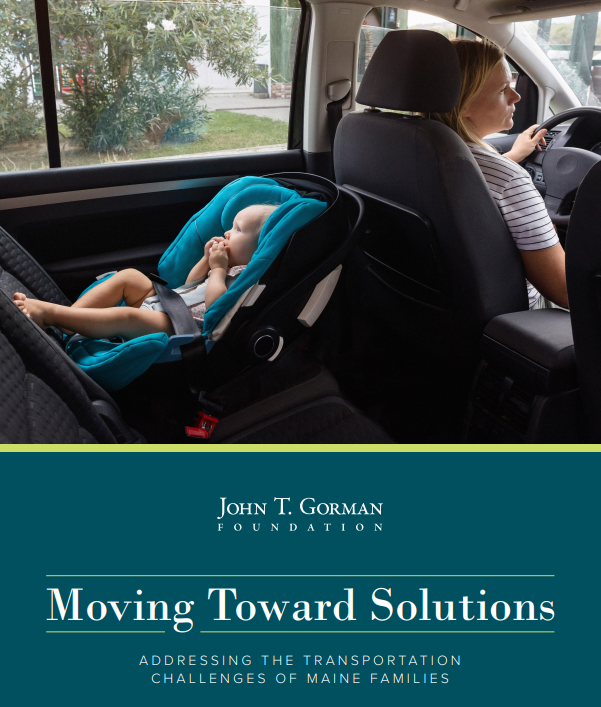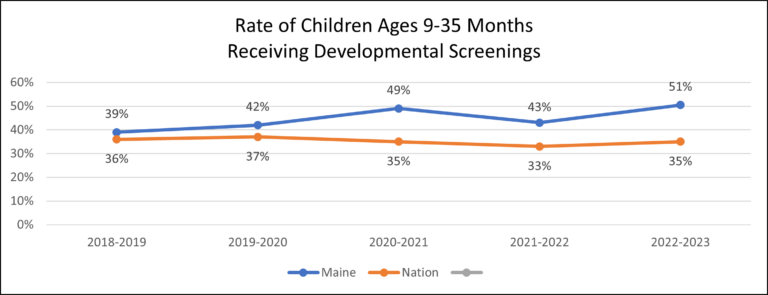Educate Maine is piloting a new model for helping to address teacher shortages and equip aspiring educators for success in the classroom
Students thrive – in school and beyond – when they encounter teachers throughout their education who are well-equipped to meet their needs, support their development, and encourage their aspirations. Maine relies on a workforce of over 14,000 teachers to ensure that students across the state have access to these life-changing relationships from pre-K to 12th grade. But teacher shortages have mounted in recent years, with signs that the situation could worsen.
To address these challenges, statewide organization Educate Maine is developing several strategies to retain existing teachers while strengthening efforts to grow and diversify the teaching profession through its Teach Maine Center. With support from the John T. Gorman Foundation, one strategy aims to improve certification and retention rates for those who are pursuing non-traditional pathways into teaching – and could hold key insights to cultivating a much-needed source of new teachers.
Challenges Facing Maine’s Educator Workforce
Educate Maine’s mission is to champion career readiness by increasing the educational attainment of Maine people.
“Education changes the trajectory of students’ and families’ lives,” said Educate Maine Executive Director Jason Judd. “It helps them gain economic opportunities that they wouldn’t have without strong education attainment.”
Through advocacy, data analysis, and programming, the organization works to strengthen education systems from early childhood through adulthood. One key area of work is strengthening the state’s educator workforce, which is facing a critical shortage. An Educate Maine report recently quantified that not enough people are being prepared to replace teachers who are now retiring or leaving the field in increasing numbers. The number of people completing education prep programs in Maine has dropped 50% in the last 10 years.
Shortages are most pronounced in rural areas as well as urban districts with lower teacher pay than surrounding communities. Schools in these areas are also more likely to employ emergency-certified teachers. A 2021 state law permits districts to allow non-certified educators to teach for up to three years if they meet minimum requirements and are working toward their certification.
Pilot Supports Alternative Pathways into Teaching
As Educate Maine develops strategies for improving teacher retention and recruitment, it is also working to strengthen alternative pathways into teaching. Maine heavily relies on traditional four-year teacher prep programs to sustain its educator workforce. But Judd said that Maine should do more to support the success of those who are pursuing other pathways – including emergency-certified teachers and other professionals who are already working in schools, such as educational technicians.
These educators bring several strengths to the workforce, Judd said. In addition to classroom experience, they have demonstrated a commitment to students, schools, and the profession, as well as a willingness to go through a rigorous certification process. As a group, they are also more diverse than the state’s educator workforce as a whole and would offer more chances for students to connect with someone from a similar background.
However, these educators face several barriers to successfully completing their certification. Even as they work full-time, they are often left on their own to navigate coursework, financing, and the certification process. Their school districts try to support them, but best practices for what strategies are most successful have not been defined.
With support from the John T. Gorman Foundation, Educate Maine is piloting strategies for removing those barriers and creating a model that districts could use to support the success of their aspiring educators.
The pilot is currently being implemented in two areas with high numbers of teacher openings and emergency certified teachers – Lewiston and MSAD 37 in Washington county. The program will support cohorts of emergency-certified teachers and aspiring educators who are already working in the districts.
Strategies include:
- Helping educators navigate the process, so they know what courses to take and in what order to achieve certification more quickly;
- Improving access to training by bringing educator programming into schools and providing financial support; and
- Offering wraparound supports to remove other barriers, like access to child care.
The program will be tailored to the needs of each district and results will be closely tracked to see what strategies are most effective. This information could then be used to replicate the model in other districts or inform state-level policy.
“We have to keep expanding pathways into teaching and remove any barriers in the way. For the future of our educator workforce and the students it serves, it’s important that every person who wants to pursue teaching has that opportunity,” said Judd. “In the case of this pilot program, these are amazing people who are already working toward certification. With some immediate intervention, we think they can be much more successful.”




